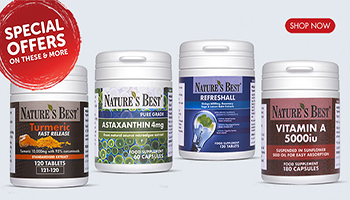
Dry eye syndrome (also known as dry eye) doesn’t usually cause long-term vision problems. It can, however, make your eyes feel uncomfortable and irritated.
According to the National Institute for Health and Care Excellence (NICE), between five and 33 per cent of adults worldwide are affected by dry eye. People aged 50 or older, women, and those who have had vision correction surgery are more likely to experience it than others.i
The older you are, the more likely you are to have dry eye. The College of Optometrists suggests it becomes more common by between two and 10.5 per cent each decade.ii
Usually, both eyes are affected, though one eye can be more affected than the other. The main symptoms include:
-
Eye irritation: soreness, burning or grittiness, the feeling you have something in your eye.
-
Sensitivity to bright light.
-
Blurred vision (though this is usually temporary).
-
Eyes watering more than usual.
Dry eye is also a symptom of eye strain (asthenopia). This can happen when you use your eyes intensely.
Most of the information online advises treating dry eyes with eye drops. There are, however, ways of treating your symptoms more naturally. It can be treated through your diet and taking nutritional supplements. If this route interests you, this guide will tell you what you need to know.
What causes dry eye?
Dry eye is the result of having a problem with your tear film. Your tear film has three layers, with the middle watery layer producing what we know of as tears. These are made by a lacrimal gland underneath each eyelid; these glands constantly make tear fluid, then release it onto the front of the eye. When you blink your eyelid distributes the fluid across the cornea (the front of the eye).

A tiny amount of oily liquid is also produced, this time by the meibomian glands, which are other glands under the eyelid. These keep the tear surface smooth and stop fluid from evaporating.
Several things can affect this process. You may not produce enough tear fluid, your tears may not be of the right quality, or the fluid may not be spread across the cornea properly.
The following can also cause problems with tears:
-
Hormonal changes in women.
-
Medical conditions including Sjögren’s syndrome, multiple sclerosis, rheumatoid arthritis, underactive or overactive thyroid and skin disorders such as seborrhoeic dermatitis and rosacea.
-
Eye conditions such as blepharitis and meibomian gland dysfunction (MGD).
-
Medicines including diuretics, antidepressants, antihistamines, treatments used for anxiety and other psychological problems, blood pressure drugs called beta-blockers, acne medicines, eye drops used for other eye conditions and cough medicines.
-
Wearing contact lenses.
-
Environmental conditions such as wind and low humidity (from central heating or living in a hot, dry climate, for example)
-
Having a low blinking rate (this can happen if you spend long periods looking at a digital screen or TV).
-
Having an eye injury or surgery.
Does drinking water help dry eyes?
Being dehydrated – which means the water level in your body is lower than it should be – can result in reduced tear fluid production. This can cause the symptoms of dry eye, such as irritation, blurred vision and excess watering. If you have any of these symptoms, it’s worth making sure that you’re drinking enough water and other fluids.
According to the NHS, you should drink six to eight glasses of fluid a day, including water, lower-fat milk, sugar-free drinks, tea and coffeeiii. Water is a healthy option as it has no calories and doesn’t contain sugar that could damage your teeth.
Not sure you’re dehydrated or drinking enough water? Check the colour of your urine – if it’s dark and strong-smelling, you need to drink more fluids. Try using this colour chart to help you decide whether or not you need to drink more.
What are the best eye drops for dry eyes?
If your eye expert confirms you have dry eye, the first thing they may recommend is eye drops called artificial tears.
These are also called tear supplements or lubricant eye drops, and they replace your natural tears, making your eyes feel more comfortable. There is a large range of artificial tears preparations available over the counter at pharmacies, with drops recommended for use during the day and thicker formulations such as ointments or gels advised for use before bed.
According to the National Institute for Health and Clinical Excellence (NICE), a preparation called hypromellose is the most popular artificial tears productiv. The drops are a clear, colourless solution that you normally use three times a day, or as often as your eye expert or doctor recommends.
Other eye drops used for dry eye conditions include:
Ciclosporin
Known in the US as Restasis, ciclosporin eye drops are only available on prescription. NICE advises that ciclosporin drops are a possible treatment for treating severe keratitis in adults with dry eye disease that hasn’t improved with artificial tears treatmentv (keratitis is inflammation of the cornea, the clear tissue that covers the front part of your eye). Ciclosporin is classed as an immunosuppressive medication, and it works by reducing inflammation associated with dry eye and increasing the eyes’ natural ability to produce tears.
Lifitegrast
Known by the brand name Xiidra, lifitegrast is a newer dry eye treatment that has been approved in the US. However here in the UK it is still being appraised by NICE, which means currently it isn’t authorised for use.
Steroid eye drops
Drops and ointments containing corticosteroid medicines are used as short-term treatments in cases of severe dry eye disease. These work by reducing inflammation in the eye. However they are usually only prescribed in the UK if you’re being treated for dry eye disease at a hospital eye service. They may also increase your risk of developing cataracts or high pressure in the eye if you use them for too longvi.
How can you cure dry eyes permanently?
Some people with dry eye may be recommended to have a minor operation that partially or completely blocks up the natural drainage holes (tear ducts) in their eyelids. Called punctal occlusion, this prevents tears from draining from the surface of the eyes or reduces the rate at which tears drain away. Instead of draining away, the tears evaporate naturally from the surface of the eyes.
These drainage holes are called lacrimal puncta, and they are found on the inside corner of your upper and lower eyelids. During the operation you have tiny plugs made of silicon or collagen inserted into the lower or upper and lower drainage holes. If they help they can be left in place or replaced with more permanent plugs. However if they don’t relieve your symptoms they can be taken out again.
If punctal plugs are successful, your eye specialist may recommend that you have the drainage holes closed up permanently. This involves having an operation where the holes are sealed using cauterisation (heat). It’s a simple operation, and because you’ll have a local anaesthetic it’s painless too.
However there’s still a chance that you’ll have to use drops to keep your eyes comfortable, even after having your drainage holes plugged or sealed up permanently.
What is the best home remedy for dry eye?
One of the things that can contribute to dry eye is when the meibomian glands on the edges of your eyelids don’t secret enough oil – or meibum – to keep your eyes lubricated.
You can help unblock clogged meibomian glands yourself at home by practising eyelid hygiene every day. This involves three things:
1. Apply heat
Warming your eyelids can help make the meibum flow more freely. Take out your contact lenses if you use them, and gently press a clean cloth that has been soaked in very warm water on your eyelids for five to 10 minutes. If during that time the cloth becomes cool, put it back in hot water to warm it again. Alternatively you could try using a reusable heat pack that you warm up in the microwave. This may be a better option, as heat packs tend to cool much more slowly than hot cloths. Follow the heating instructions carefully, as the heat pack shouldn’t be too hot.
2. Massage
As soon as you’ve finished with the hot cloth or heat pack, start massaging your upper and lower eyelids – apply enough pressure to help push out the fluid from the glands, but always make sure it feels fairly comfortable (it shouldn’t be painful). Keep the eye you’re massaging shut and use sweeping movements upwards or downwards from the eyelid towards the lash line for about 30 seconds per eyelid.
3. Keep your eyelids clean
Once you’ve finished massaging, clean your eyelids with water that‘s been boiled and left to cool. You can also use products called lid scrubs, which are available from opticians and some pharmacies.
Alternatively, your eye specialist may recommend you have a procedure called meibomian gland expression, where the glands are squeezed using a special forceps-type instrument. This procedure is usually done at eye clinics or hospitals. It can be uncomfortable, as your specialist has to apply some pressure to unclog the glands. But the results can be effective.
Many experts believe eating certain foods or taking nutrition supplements may help treat and even prevent dry eye too. Here’s what you should know:
Omega 3 fatty acids
Found in oily fish, eicosapentaenoic acid (EPA) and docosahexaenoic acid (DHA) may help treat dry eye.vii viii One study suggested that women who eat the most omega 3s from fish may be 17 per cent less likely to develop the condition than those who eat less or no fish or seafood.ix There’s also evidence that people who develop dry eyes as a result of using a computer may also benefit from taking daily omega 3 supplements, with fish oils found to reduce the rate of tear evaporation significantly.x
To get more EPA and DHA in your diet, try eating salmon, fresh tuna, sardines, pilchards, trout, herring or mackerel. Current guidelines state you should eat at least two portions of fish a week, one of which should be oily. To learn more read our article about the benefits of omega 3 on eye health.
Several other studies suggest supplements containing fish oils in combination with other ingredients may help improve the symptoms of dry eye too. One followed postmenopausal women with dry eye whose symptoms were relieved by taking a supplement containing fish oil, blackcurrant seed oil and vitamins A, B6, C and E (xi). In another study, participants with moderate to severe dry eye were given fish oil or olive oil supplements for a year. Both found their symptoms improved, though they improved a little more in those taking the fish oils (xii). There’s also evidence that fish oil supplements may also be helpful if you have dry eyes as a result of wearing contact lenses (xiii).
These days, vegetarians and vegans can also benefit from omega-3 supplements that contain beneficial omega-3 oils that aren’t derived from fish. These products contain the natural triglyceride (TG) form of omega-3 sourced from algae.
Lutein and zeaxanthin
Taking lutein and zeaxanthin supplements may help if you experience eye strain – including dry eyes – after spending a long time in front of a computer. In one study, researchers found such supplements may improve eye strain in such cases while reducing eye fatigue and headaches.xiv
Boost your intake of lutein and zeaxanthin by eating more green leafy vegetables and other colourful fruits and vegetables.
Vitamins C and E
Antioxidants in general – including vitamin C and vitamin E – may help with dry eye. One study trialled a supplement containing both vitamins along with B2, zinc and grape polyphenols. The supplement may have helped improve tear stability while reducing the burning, itching, redness and the sensation of having something in your eye.xv
The easiest way to up your vitamin C intake is by eating citrus fruits, red and green peppers, kiwifruit, tomatoes, strawberries, broccoli, spinach, potatoes and Brussels sprouts. Vitamin E is found in nuts, seeds and vegetables; especially green leafy vegetables.
Vitamin D
Evidence suggests having low vitamin D levels may increase susceptibility to dry eyes. One study discovered 52 per cent of women with low vitamin D had dry eyes, compared with four per cent of those with normal vitamin D levels.xvi
Getting enough vitamin D can be a challenge since a major source is sunlight. The UK government recommends everyone take a vitamin D supplement during the autumn and winter months. You can get vitamin D from your diet too: try eating oily fish, eggs, red meat, and foods fortified with the vitamin.
Interested in learning more about how vitamin D improves your eye health? Find more information here.
Sea buckthorn berries
Found in China and Russia, these berries are rich in antioxidants, and some experts believe supplementing your diet with sea buckthorn berry oil may help improve dry eye symptoms by reducing tear film osmolarity, a mechanism thought to cause dry eye.xiv
Turmeric
Used as a culinary spice, turmeric adds flavour as well as colour to food, particularly curry dishes. It contains an active antioxidant compound called curcumin, which has been linked with a number of health benefits – one of which is dry eye relief. Indeed, researchers investigating a supplement containing curcumin combined with soy lecithin and its potential use as a treatment for an autoimmune eye disease called chronic anterior uveitis suggest the supplement may be beneficial for dry eye too (xviii).
Flaxseed oil
If you have dry eye as a result of having Sjögren’s syndrome, there’s evidence that a flaxseed oil supplement may help. A small-scale study has found that taking one or two grams of flaxseed a day may help reduce inflammation on the surface of the eye and relieve the symptoms of dry eye in people with Sjögren’s syndrome (xix).
Want to read more about how your lifestyle can help you maintain healthy vision? Take a look around the rest of our Vision Health Hub.
References:
-
Dry eye syndrome. (2017). National Institute for Health and Care Excellence. Available online: https://cks.nice.org.uk/dry-eye-syndrome#!backgroundsub:2
-
Dry Eye (Keratoconjunctivitis Sicca, KCS). (2018). The College of Optometrists. Available online: https://www.college-optometrists.org/guidance/clinical-management-guidelines/dry-eye-keratoconjunctivitis-sicca-kcs-.html
-
Available online: https://www.nhs.uk/live-well/eat-well/water-drinks-nutrition
-
Available online: https://cks.nice.org.uk/dry-eye-syndrome#!scenario
-
Available online: https://www.nice.org.uk/guidance/ta369/chapter/1-Guidance
-
Available online: http://www.io.nihr.ac.uk/wp-content/uploads/migrated/Lifitegrast-Sept16.pdf
-
Rahul, B., Prachi, K., et al. (2013). A randomized controlled trial of omega-3 fatty acids in dry eye syndrome. Int J Opthalmol. 6(6):811-816. Available online: https://www.ncbi.nlm.nih.gov/pubmed/24392330
-
Bhargava, R., et al. (2013). A randomized controlled trial of omega-3 fatty acids in dry eye syndrome. Int J Ophthalmol. 6(6): 811–816. Available online: https://www.ncbi.nlm.nih.gov/pmc/articles/PMC3874521
-
Sheppard Jr JD. et al., Long-term Supplementation With n-6 and n-3 PUFAs Improves Moderate-to-Severe Keratoconjunctivitis Sicca: A Randomized Double-Blind Clinical Trial. Cornea. 2013 Oct;32(10):1297-304. Available online: https://journals.lww.com/corneajrnl/Abstract/2013/10000/Long_term_Supplementation_With_n_6_and_n_3_PUFAs.1.aspx
-
Asbell PA. et al., Fatty Acid Supplementation for the Treatment of Dry Eye Disease. N Engl J Med. 2018 May 3;378(18):1681-1690. Available online: https://www.nejm.org/doi/full/10.1056/NEJMoa1709691
-
Downie LE. et al., Modulating Contact Lens Discomfort with Anti-Inflammatory Approaches: A Randomized Controled Trial. IOVS. July 2018;59:3755-3766. Available online: https://iovs.arvojournals.org/article.aspx?articleid=2695024
-
Miljanovic, B., et al. (2005). Relation between dietary n−3 and n−6 fatty acids and clinically diagnosed dry eye syndrome in women. The American Journal of Clinical Nutrition, Volume 82, Issue 4. Pages 887–893. Available online: https://academic.oup.com/ajcn/article/82/4/887/4607578
-
Bhargava, R., et al. (2015). Oral omega-3 fatty acids treatment in computer vision syndrome related dry eye. Cont Lens Anterior Eye. Jun;38(3):206-10. Available online: https://www.ncbi.nlm.nih.gov/pubmed/25697893
-
Stringham, J.M., Stringham, N.T., O’Brien, K.J. (2017). Macular Carotenoid Supplementation Improves Visual Performance, Sleep Quality, and Adverse Physical Symptoms in Those with High Screen Time Exposure. Foods. Jun 29;6(7).
-
Drouault-Holowacz, S., Bievelet, S., et al. (2009). Antioxidants intake and dry eye syndrome: a crossover, placebo-controlled, randomized trial. Eur J Opthalmol. May-Jun;19(3):337-42. Available online: https://www.ncbi.nlm.nih.gov/pubmed/19396775
-
Yildirim, P., et al. (2016). Dry eye in vitamin D deficiency: more than an incidental association. Int J Rheum Dis. Jan;19(1):49-54. Available online: https://www.ncbi.nlm.nih.gov/pubmed/?term=Dry+eye+in+vitamin+D+deficiency%3A+more+than+an+incidental+association
-
Larmo, P.S., Jarvinen, R.L., et al. (2010). Oral sea buckthorn oil attenuates tear film osmolarity and symptoms in individuals with dry eye. J Nutr. Aug;140(8):1462-8. Available online: https://www.ncbi.nlm.nih.gov/pubmed/20554904
-
Allegri. P, Mastromarino. A, Neri. P. Management of chronic anterior uveitis relapses: efficacy of oral phospholipidic curcumin treatment. Long-term follow-up. Clin Ophthalmol. 2010;4:1201-1206.Available online: https://www.ncbi.nlm.nih.gov/pmc/articles/PMC2964958/
-
Pinheiro Jr MN. et al., Oral flaxseed oil (Linum usitatissimum) in the treatment for dry-eye Sjögren’s syndrome patients. Arq Bras Oftalmol. Jul-Aug 2007;70(4):649-55. Available online: http://www.scielo.br/scielo.php?script=sci_arttext&pid=S0004-27492007000400016&lng=pt&nrm=iso&tlng=pt
Related Posts?
Disclaimer: The information presented by Nature's Best is for informational purposes only. It is based on scientific studies (human, animal, or in vitro), clinical experience, or traditional usage as cited in each article. The results reported may not necessarily occur in all individuals. Self-treatment is not recommended for life-threatening conditions that require medical treatment under a doctor's care. For many of the conditions discussed, treatment with prescription or over the counter medication is also available. Consult your doctor, practitioner, and/or pharmacist for any health problem and before using any supplements or before making any changes in prescribed medications.

Christine
Christine Morgan has been a freelance health and wellbeing journalist for almost 20 years, having written for numerous publications including the Daily Mirror, S Magazine, Top Sante, Healthy, Woman & Home, Zest, Allergy, Healthy Times and Pregnancy & Birth; she has also edited several titles such as Women’ Health, Shine’s Real Health & Beauty and All About Health.
View More



